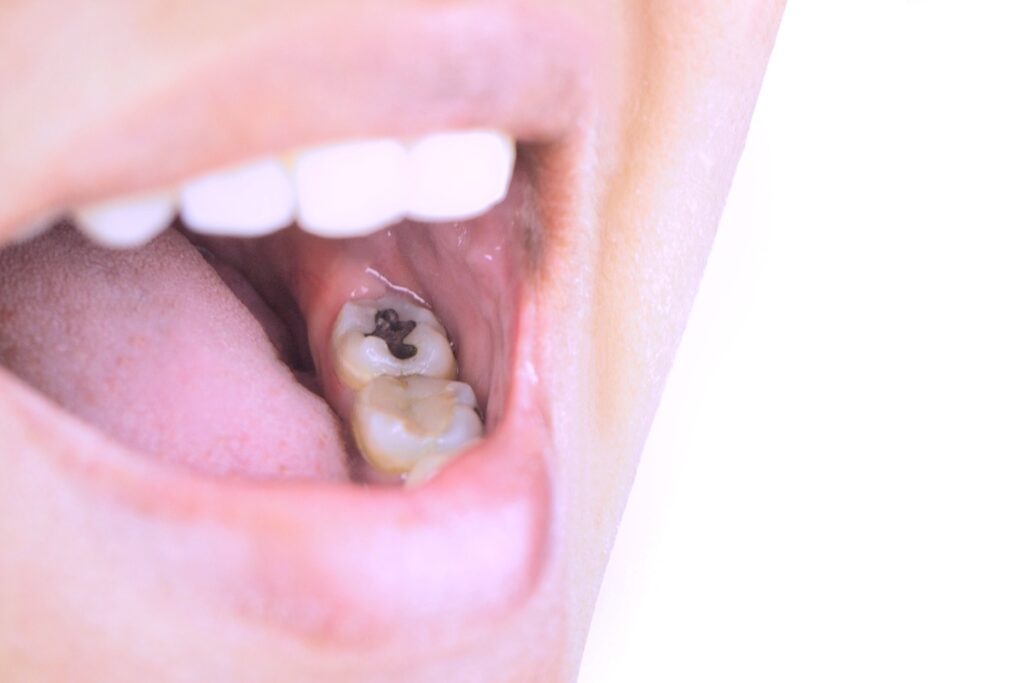Mercury amalgam fillings have served as a standard dental treatment for over 150 years, but emerging research is revealing concerning health effects that many people don’t realize exist. These silver-colored restorations contain mercury—a heavy metal known for its toxic properties—combined with silver, tin, and copper. Although major dental organizations maintain that these fillings are safe, holistic practitioners and health-conscious patients are increasingly questioning whether the convenience of amalgam fillings justifies the potential health risks.
At Club K Holistic Dental, we believe in transparency about all dental materials and their potential effects on your overall health. Dr. Knapton specializes in safe mercury removal protocols and offers mercury-free alternatives that support both your oral health and general wellness. Understanding the hidden dangers of mercury fillings empowers you to make informed decisions about leading a healthier, more natural life.
What’s the History of Mercury Fillings?
The first Mercury dental filling material was developed in France in 1816 by a Frenchman who mixed mercury with shavings from silver coins to form a soft paste that could be easily packed into a hole in the tooth. Barbers/dentists loved this new material because it was easy to place, and they could make money using it. The few doctors who practiced dentistry at that time were not particularly enthusiastic about it, though. They knew the symptoms of mercury exposure because they had watched hat makers use mercury to turn fur into felt to make the felt hats. After continued exposure to mercury, the hat makers began to exhibit bizarre behavior. This is where the term “Madhatter“ comes from. The mercury quite literally was making them crazy.
Despite doctors’ concerns, the barbers continued placing them because they were making money on these easy feelings! Therefore, mercury fillings were here to stay. This practice was brought to the U.S. in 1831 and was an instant success. The new filling material was inexpensive, easy to use, lasted a long time, and sealed the tooth fairly well. Back then, these fillings contained 50% mercury and 50% silver. Nowadays, they still have 50% mercury.
Nearly 50% of the dental offices in the United States still use mercury fillings. Patients often ask why the government, the FDA, or the ADA doesn’t place regulations on these mercury fillings. This is a difficult question to answer due to the complex legalities and politics, including the potential for a class action lawsuit against dentists who placed these fillings. Our knowledgeable professionals can help you understand the hidden dangers of mercury fillings and the alternatives available to restore your smile.
1. Continuous Exposure to Mercury Vapor
The primary concern with amalgam fillings lies in their continuous release of mercury vapor. Every time you chew, brush, or consume hot beverages, microscopic amounts of mercury vapor are released from these fillings. This vapor is then inhaled and absorbed into your bloodstream, where it can spread to various organs, including the brain, kidneys, and liver. Studies have shown that people with amalgam fillings have significantly higher levels of mercury in their blood and urine compared to those without such restorations.
The World Health Organization acknowledges that dental amalgam is the largest source of mercury exposure for most people, exceeding exposure from all other sources combined. This continuous, low-level exposure occurs throughout the day, creating a cumulative effect that can build up in your system over years or decades.
2. Neurological and Cognitive Effects
Mercury is a known neurotoxin that can cross the blood-brain barrier, potentially affecting cognitive function and neurological health. Research has linked mercury exposure to:
- Memory problems
- Difficulty concentrating
- Mood changes
- Even tremors
- Lower IQ in children
Some studies suggest connections between amalgam fillings and conditions like multiple sclerosis, Alzheimer’s disease, and chronic fatigue syndrome, though more research is needed to establish definitive causal relationships.
Children and developing fetuses are particularly vulnerable to mercury’s neurological effects. The American Dental Association recognizes that pregnant women should avoid unnecessary amalgam placement or removal to prevent potential harm to the developing baby.
3. Immune System Disruption
Mercury can interfere with immune system function by triggering autoimmune responses. When mercury binds to proteins in your body, your immune system may mistakenly identify these mercury-protein complexes as foreign invaders, leading to chronic inflammation and autoimmune reactions.
Some individuals develop specific allergic reactions to mercury, experiencing symptoms such as:
- Chronic fatigue and weakness
- Joint pain and stiffness
- Skin rashes or oral lesions
- Digestive issues
- Headaches and migraines
These symptoms often improve significantly after safe amalgam removal, suggesting a direct connection between mercury exposure and immune system dysfunction.
4. Kidney and Cardiovascular Complications
The kidneys bear much of the burden when it comes to processing and eliminating mercury from the body. Chronic mercury exposure can lead to kidney damage and impaired function over time. Additionally, research has indicated potential cardiovascular effects, including increased risk of heart disease and high blood pressure.
Mercury’s ability to interfere with cellular processes means it can affect virtually any organ system. The cardiovascular system is particularly vulnerable because mercury can damage blood vessel walls and interfere with normal heart rhythm regulation.
5. Environmental and Dental Office Safety Concerns
Beyond personal health risks, mercury amalgam fillings pose environmental hazards. When these fillings are removed improperly, mercury vapor can contaminate dental offices, affecting both patients and dental staff. Additionally, mercury from dental offices contributes to environmental pollution through waste disposal and cremation processes.
Proper removal requires specialized equipment and protocols to protect everyone involved. At our practice, Dr. Knapton follows strict safety protocols for amalgam removal, including high-volume suction, rubber dam isolation, and air filtration systems to minimize exposure during the removal process.
Safe Mercury Removal and Better Alternatives at Club K Holistic Dental
If you’re concerned about existing mercury fillings, it’s essential to work with a dentist who is trained in safe removal protocols. Simply removing amalgam fillings without proper precautions can dramatically increase mercury exposure. Dr. Knapton is certified in safe mercury amalgam removal techniques that prioritize your health and safety throughout the process.
Fortunately, modern dentistry offers excellent alternatives to mercury amalgam, including composite resin fillings, porcelain inlays, and ceramic restorations. These mercury-free options provide exceptional durability while supporting your overall health and natural tooth appearance. Call us at (417) 397-7700 or contact our team today to discuss your options and learn more about safe mercury removal protocols that can help protect your long-term health and wellness.






